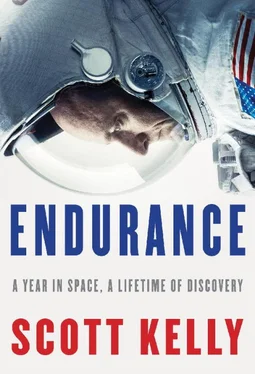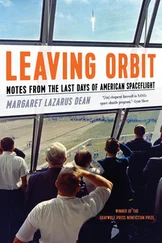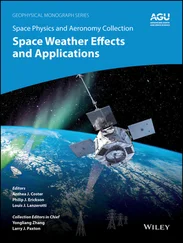When I finally finish the huge job of changing out the urine processor, it is satisfying knowing that we will be able to process urine and make clean water. But it’s also strangely unsatisfying in that all I’ve done is put everything back the way it usually is. I reinstall the kabin, making sure all the tools are stowed properly, downlink the photos, then run on the treadmill for half an hour.
While I’m running, a smoke alarm annunciates loudly. The treadmill under my feet stops automatically. The emergency signals are designed to get our attention, and they do. Even as I’m unhooking my running harness and scrambling to respond to the alarm, I’m pretty sure I know what caused it—as I was running I probably liberated some dust from the treadmill or maybe caused the motor to smoke a bit by pushing against the treadmill in an effort to get my heart rate up. The fire alarm also automatically shuts down ventilation in Node 3, and that shuts down our Seedra. After we’re fully recovered from the alarm, the ground informs us that they can’t restart the Seedra and aren’t sure why. I’m less than thrilled by the prospects of rising CO 2until we can get it running again.
I’ve been looking forward to my videoconference with Amiko all day. Once a week we get to see as well as hear each other, for a length of time varying from forty-five minutes to an hour and a half. We have developed a ritual at the end of each videoconference: Amiko picks up her iPad and carries it around the house so I can see inside each room. It makes me feel connected to home to see our sofa, our bed, the pool, the kitchen—all of it flooded with sunlight, each of the objects held down by gravity. Once, in the kitchen, I noticed a warning light on the fridge—the water filter needed to be changed. I pointed it out to Amiko so she could have clean water too.
Today, I can see Amiko sitting on our sofa with light streaming in the window to her right. We talk about how each of our days has gone so far, then she reminds me about next week’s videoconference: she has offered to have some of my friends over to our house so I can visit with them. She mentions that in the course of preparing for guests, she discovered that the speakers by our pool aren’t working, and she hasn’t been able to troubleshoot the problem on her own yet.
“I’ll figure it out before Saturday,” she says.
“Let’s just fix it now,” I suggest, and within minutes she’s pointing the iPad camera at the web of cords on the back of the stereo components in the closet while I squint at the fuzzy image on my screen, trying to figure out which connection isn’t working.
“Push that button on the left,” I suggest. She tries to comply. “No, not that one, the one next to it.”
“I’m pushing it,” she says. “It’s just not working.”
The videoconference ends abruptly when we lose comm coverage. The image on my screen is static—the larger window showing Amiko, her face drained and expressionless in the dark closet; the smaller window showing my own face, frozen around the words I was saying. We both look incredibly annoyed. What if this were to be the last time we saw each other? I stare at the two faces for a moment, then turn off my laptop. The CO 2is climbing, and I can feel the accompanying headache coming on.
A couple of hours later, when we have coverage again, I call Amiko’s cell.
“I just wanted to tell you I’m so sorry I wasted our videoconference trying to fix the speakers,” I say. “I should have just left it for later.”
“I know you don’t like to leave things undone,” she says. The warmth is back in her voice. We talk for a bit longer, then say good night.
The next day I suggest to Amiko that she could download the stereo manuals from the manufacturer website, which made it easier to fix the problem. The following week, our videoconference party goes off without a hitch.
—
STILL NO WORD from the Russians on why the Progress malfunctioned. We don’t know whether they have a good theory and just haven’t confirmed it or if they actually have no clue whatsoever. Terry, Anton, and Samantha still don’t know what their landing date will be. Every afternoon Terry floats over to the Russian segment through the dark, angled corridor of PMA-1 and into the FGB, over the tons of cargo strapped to the floor. Arriving in the open space of the service module, Terry pauses to look out the three Earth-facing windows in the floor that make the module feel like a glass-bottom boat, then asks Anton, who is always hanging halfway out of his crew quarters working on his laptop with his headset on, whether he has heard anything new about the Soyuz return. According to Terry, Anton shrugs and says no. Gennady tells us Moscow has identified a possible culprit for the Progress failure. He also tells us that our Soyuz, the one we came up here in and that Gennady will take back down with two other people in September, might have the same issue—a sobering thought that we could have been hopelessly lost. Not good news.
Since the ground was never able to get the Node 3 Seedra working again after the fire alarm, today Terry and I are working together to repair it. The experience is kind of like doing a transmission overhaul—a complicated, absorbing, detailed job—but our lives just happen to depend on this one. The other Seedra has not been operating smoothly, which puts a lot of pressure on us to make sure this one is repaired.
Dismantling the beast with Terry’s help is much better than struggling with it on my own, but it’s still unbelievable how much of a pain in the ass this thing is. The valves are positioned in places where no human hand can reach them, and we have to use four different-size wrenches, each turning a bolt only ten or twenty degrees, multiple times. It takes half an hour just to remove one bolt, and Terry tears up the back of his hand so much in the process he has to bandage it—in space, blood wells up into spheres and, if liberated, floats everywhere. We are finally able to get the Seedra out of its rack and float it to the Japanese module, where there is more room to work. Moving such a large mass is a slow and deliberate process. After a break to eat lunch, we return to finish the job. The next day, once we think we have it fixed, we return Seedra to Node 3 to reinstall it into its rack. It doesn’t fit. We try different angles, different approaches, use more or less force, jiggle it, bang into it with our shoulders. Gennady comes down to add some extra muscle. Nothing works. Terry and I examine the beast and realize that there are some washers on the bottom of it that seem to serve no other purpose than to hold it in place once it’s seated correctly. (They were probably designed to protect the Seedra from the vibration of launch.) If we remove those, I think it could shift down a bit and settle properly into place.
I call down to the ground to describe my idea about the washers, expecting to get the typical NASA answer that this will require further study and consultation with experts—days of emails, phone calls, and meetings—before they reach the conclusion that it would be an acceptable solution. NASA’s tendency toward an abundance of caution and excessive analysis is both a good thing and a bad thing. We always err on the side of doing things the way they have always been done if those things haven’t killed any astronauts or destroyed any important hardware. Yet this attitude often keeps us from trying new things that would save everyone a good deal of time and trouble. I don’t think the control center always takes into account that our time and energy are resources that can be wasted.
After a short interlude of consultations, the ground tells us to try removing the washers. Terry and I exchange a surprised look. Maybe the culture in the control center is changing; maybe the flight controllers are getting better at trusting astronauts’ judgment.
Читать дальше












